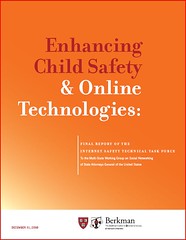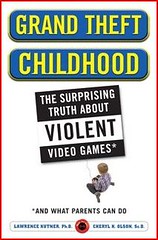 Over the weekend, Janet Morrissey of The New York Times posted an excellent article on the U.S. government’s continuing crackdown on Internet gambling. (“Poker Inc. to Uncle Sam: Shut Up and Deal“) Ironically, her article arrives on the same week during which PBS aired the terrific new Ken Burns and Lynn Novick documentary on the history of alcohol prohibition in the United States. It’s a highly-recommended look at the utter hypocrisy and futility of prohibiting a product that millions of people find enjoyable. If there’s a simple moral to the story of Prohibition, it’s that you can’t repress human nature–not for long, at least, and not without serious unintended consequences. Which is why Morrissey of the Times notes:
Over the weekend, Janet Morrissey of The New York Times posted an excellent article on the U.S. government’s continuing crackdown on Internet gambling. (“Poker Inc. to Uncle Sam: Shut Up and Deal“) Ironically, her article arrives on the same week during which PBS aired the terrific new Ken Burns and Lynn Novick documentary on the history of alcohol prohibition in the United States. It’s a highly-recommended look at the utter hypocrisy and futility of prohibiting a product that millions of people find enjoyable. If there’s a simple moral to the story of Prohibition, it’s that you can’t repress human nature–not for long, at least, and not without serious unintended consequences. Which is why Morrissey of the Times notes:
And so the poker world now finds itself in a situation many liken to Prohibition. America didn’t stop drinking when the government outlawed alcoholic beverages in 1919. And, in this Internet age, it won’t be easy to prevent people from gambling online, whatever the government says. “It’s a game of whack-a-mole,” says Behnam Dayanim, an expert on online gambling and a partner at the Axinn Veltrop & Harkrider law firm. “They’ve whacked three very large moles, but over time, more moles will pop up.”
Exactly right (except that it should be “whac” not “whack”! There’s no K in whac-a-mole.) It reminds me of the paper that my blogging colleague Tom Bell penned back in 1999 for the Cato Institute with its perfect title: “Internet Gambling: Popular, Inexorable, and (Eventually) Legal.” As Tom noted back then: Continue reading →
 Since joining the ranks of the unemployed, a number of folks have sent kind notes wishing me well and asking what’s next for me. Well, now that I finally have the time to pursue my lifelong dream, I’m pleased to announce my new venture: The Sin Think Tank. The mission of the Sin Think Tank will be to promote prurient interests, gun play, gambling, unhealthy eating, and alcohol and tobacco appreciation. Some of our positions or programs will include:
Since joining the ranks of the unemployed, a number of folks have sent kind notes wishing me well and asking what’s next for me. Well, now that I finally have the time to pursue my lifelong dream, I’m pleased to announce my new venture: The Sin Think Tank. The mission of the Sin Think Tank will be to promote prurient interests, gun play, gambling, unhealthy eating, and alcohol and tobacco appreciation. Some of our positions or programs will include:
- The Bob Guccione Fellow in Cultural Studies
- The Joe Camel Chair in Environmental Analysis
- The Smith & Wesson Institute for Peace
- The Jack Daniels Center for Spirited Discussion
- The Center for Gambling Promotion
- The Dunkin Donuts Nutrition & Nourishment Initiative (aka, the “Feed the World” initiative)
- The Hunter S. Thompson Foundation for Free Living & High Times
Our official headquarters — a unique edifice constructed entirely from stacks of Benjamins stuck together with trans fats and extra-sugary kids’ gum — will eventually be located in Las Vegas, Nevada, of course. Job benefits are excellent, especially our Mixed Martial Arts day care center for the kiddies.
Resumes are welcome but personal interviews are preferred and will take place at Gilbert’s Indoor Gun Range or at The Brickskeller while applicants are expected to sample 2% of every beer in stock during one sitting.
I welcome ideas for other positions and centers. [The Sin Think Tank is an Equal Opportunity Offender Employer.]
 David Leonhardt of The New York Times penned an interesting essay a few days ago entitled, “Do Video Games Equal Less Crime?” reflecting upon the same FBI crime data I wrote about earlier this week, which showed rapid drops in violent crime last year (on top of years of steady declines). Crimes of all sorts plummeted last year despite the serious economic recession we find ourselves in. Downturns in the economy are typically followed by upticks in crime. Not so this time. Which leads Leonhardt to wonder if perhaps exposure to violent media (especially violent video games) could have played a positive role in tempering criminal activity in some fashion:
David Leonhardt of The New York Times penned an interesting essay a few days ago entitled, “Do Video Games Equal Less Crime?” reflecting upon the same FBI crime data I wrote about earlier this week, which showed rapid drops in violent crime last year (on top of years of steady declines). Crimes of all sorts plummeted last year despite the serious economic recession we find ourselves in. Downturns in the economy are typically followed by upticks in crime. Not so this time. Which leads Leonhardt to wonder if perhaps exposure to violent media (especially violent video games) could have played a positive role in tempering criminal activity in some fashion:
Video games can not only provide hours of entertainment. They can also give people — especially young men, who play more than their fair share of video games and commit more than their fair share of crimes — an outlet for frustration that doesn’t involve actual violence. Video games obviously have many unfortunate side effects. They can promote obsessive, antisocial behavior and can make violent situations seem ordinary. But might video games also have an upside? I’m willing to consider the idea.
Go Back to the Greeks
What Leonhardt is suggesting here goes by the name “cathartic effect hypothesis” and debates have raged over it for centuries. Seriously, the fight goes all the way back to the great Greek philosophers Plato and Aristotle. And, as with everything else, Aristotle had it right! Well, at least in my opinion he did, but I am a rabid Aristotealian. While Plato thought the media of his day (poetry, plays & music) had a deleterious impact on culture and humanity, Aristotle took a very different view. Indeed, most historians believe it was Aristotle who first used the term katharsis when discussing the importance of Greek tragedies, which often contained violent overtones and action. He suggested that these tragedies helped the audience, “through pity and fear effecting the proper purgation of these emotions.” (See Part IV of Aristotle’s Poetics,) Aristotle spoke highly of tragedies that used provocative or titillating storytelling to its fullest effect:
Continue reading →
NPR notes that we’re approaching a major milestone in the history of man’s relationship with machines:
Nearly 200 years ago, workers in England took up arms against technology. Weavers protested the advent of mechanized looms with violence. Named for weaver Ned Lud, the Luddites feared machines would make hand weaving extinct. The people of Huddersfield are rising up again, but this time to commemorate the city’s 19th century weavers.
According to this history of the Luddite movement, the 199th anniversary of the movement’s beginnings passed just last week:
The first incident during the years of the most intense Luddite activity, 1811-13, was the 11 March 1811 attack upon wide knitting frames in a shop in the Nottinghamshire village of Arnold, following a peaceful gathering of framework knitters near the Exchange Hall at Nottingham. In the preceding month, framework knitters, also called stockingers, had broken into shops and removed jack wires from wide knitting frames, rendering them useless without inflicting great violence upon the owners or incurring risk to the stockingers themselves; the 11 March attack was the first in which frames were actually smashed and the name “Ludd” was used. The grievances consisted, first, of the use of wide stocking frames to produce large amounts of cheap, shoddy stocking material that was cut and sewn into stockings rather than completely fashioned (knit in one piece without seams) and, second, of the employment of “colts,” workers who had not completed the seven-year apprenticeship required by law.
In other words, a bunch of hooligans—the ancestors of today’s stereotypically rude, drunk and violent English soccer fans, no doubt—started smashing machines because—horror of horrors!—the machines were producing less expensive textiles and could be operated by cheaper, less-skilled workers outside the hooligans’ guild. That, in essence, is the history of technology and its discontents: Innovation produces gains in productivity that raise the overall standard of living by bringing down prices for consumers, but workers in outmoded industries try to obstruct progress because it renders their unproductive jobs obsolete. Tim Lee noted this back in 2006 regarding the supposed need for tech workers to unionize. Continue reading →
On Friday, the Federal Communications Commission (FCC) released a new Notice of Inquiry entitled, “Empowering Parents and Protecting Children in an Evolving Media Landscape” (MB Docket No. 09-194). The purpose of this investigation is to:
seek information on the extent to which children are using electronic media today, the benefits and risks these technologies bring for children, and the ways in which parents, teachers, and children can help reap the benefits while minimizing the risks. (p. 2)… Our goal with this NOI is to gather data and recommend-ations from experts, industry, and parents that will enable us to identify actions that all stakeholders can take to enable parents and children to navigate this promising electronic media landscape safely and successfully. (p. 3)
This Notice builds on the FCC’s August 31st Report to Congress (“Implementation of the Child Safe Viewing Act; Examination of Parental Control Technologies for Video or Audio Programming”) that was required pursuant to the “Child Safe Viewing Act of 2007,” which Congress passed last year and President Bush signed last December. The goal of that bill and the FCC’s proceeding (MB Docket No. 09-26) was to study “advanced blocking technologies” that “may be appropriate across a wide variety of distribution platforms, including wired, wireless, and Internet platforms.” [I filed 150+ pages worth of comments in that proceeding, and here’s my analysis of why the bill and the FCC’s proceedings are worth monitoring. In previous posts here, I also listed all the major filings and reply comments that were submitted to the FCC in the matter.]
While the FCC’s new Notice outlines several positive impacts that media use may have for children, it then goes on to itemize a variety of concerns about media exposure: Continue reading →

If you’re from New Jersey and you like to drink wine — or just feel strongly that government shouldn’t be protecting alcohol distributors at the expense of competition and consumers — go to the UncorkNJ website and send a letter to your local representative in the General Assembly. New Jerseyans are barred from buying wine over the Web, and having it shipped to their home. The time to disintermediate is now!
 The Internet Safety Technical Task Force (ISTTF), which was formed a year ago to study online safety concerns and technologies, today issued its final report to the U.S. Attorneys General who authorized its creation. It was a great honor for me to serve as a member of the ISTTF and I believe this Task Force and its report represent a major step forward in the discussion about online child safety in this country.
The Internet Safety Technical Task Force (ISTTF), which was formed a year ago to study online safety concerns and technologies, today issued its final report to the U.S. Attorneys General who authorized its creation. It was a great honor for me to serve as a member of the ISTTF and I believe this Task Force and its report represent a major step forward in the discussion about online child safety in this country.
The ISTTF was very ably chaired by John Palfrey, co-director of Harvard University’s Berkman Center for Internet & Society, and I just want to express my profound thanks here to John and his team at Harvard for doing a great job herding cats and overseeing a very challenging process. I encourage everyone to examine the full ISTTF report and all the submissions, presentations, and academic literature that we collected. [It’s all here.] It was a comprehensive undertaking that left no stone unturned.
Importantly, the ISTTF convened (1) a Research Advisory Board (RAB),which brought together some of the best and brightest academic researchers in the field of child safety and child development and (2) a Technical Advisory Board (TAB), which included some of America’s leading technologists, who reviewed child safety technologies submitted to the ISTTF. I strongly recommend you closely examine the RAB literature review and TAB assessment of technologies because those reports provide very detailed assessments of the issues. They both represent amazing achievements in their respective arenas.
There are a couple of key takeaways from the ISTTF’s research and final 278-page report that I want to highlight here. Most importantly, like past blue-ribbon commissions that have studied this issue, the ISTTF has generally concluded there is no silver-bullet technical solution to online child safety concerns. The better way forward is a “layered approach” to online child protection. Here’s how we put it on page 6 of the final report:
The Task Force remains optimistic about the development of technologies to enhance protections for minors online and to support institutions and individuals involved in protecting minors, but cautions against overreliance on technology in isolation or on a single technological approach. Technology can play a helpful role, but there is no one technological solution or specific combination of technological solutions to the problem of online safety for minors. Instead, a combination of technologies, in concert with parental oversight, education, social services, law enforcement, and sound policies by social network sites and service providers may assist in addressing specific problems that minors face online. All stakeholders must continue to work in a cooperative and collaborative manner, sharing information and ideas to achieve the common goal of making the Internet as safe as possible for minors.
Continue reading →
And so the series continues. The Washington Post reports that the Department of Justice has just released “a scathing report” finding that over a 5-year period the Bureau of Alcohol, Tobacco, Firearms and Explosives (ATF) “lost dozens of weapons and hundreds of laptops that contained sensitive information.” The DOJ’s Inspector General Glenn A. Fine found that 418 laptop computers and 76 weapons were lost. According to the report:
Yesterday’s report showed that ATF, a much smaller agency than the FBI, had lost proportionately many more firearms and laptops. “It is especially troubling that that ATF’s rate of loss for weapons was nearly double that of the FBI and [Drug Enforcement Administration], and that ATF did not even know whether most of its lost, stolen, or missing laptop computers contained sensitive or classified information,” Fine wrote. […]
Many of the missing laptops contained sensitive or classified material, according to the report. ATF began installing encryption software only in May 2007. ATF did not know what information was on 398 of the 418 lost or stolen laptops. The report called the lack of such knowledge a “significant deficiency.” Of the 20 missing laptops for which information was available, ATF indicated that seven — 35 percent — held sensitive information. One missing laptop, for example, held “300-500 names with dates of birth and Social Security numbers of targets of criminal investigations, including their bank records with financial transactions.” Another held “employee evaluations, including Social Security numbers and other [personal information].” Neither laptop was encrypted.
The findings regarding lost weapons were equally troubling, if not a bit humorous:
Continue reading →
 Don’t judge a book by its cover (or its title, for that matter). I’m usually faithful to that maxim, but I must admit that when I first saw the title and cover of “Grand Theft Childhood: The Surprising Truth About Violent Video Games and What Parents Can Do,” I rolled my eyes and thought to myself, “here we go again.” I figured that I was in for another tedious anti-gaming screed full of myths and hysteria about games and gamers. Boy, was I wrong. Massively wrong.
Don’t judge a book by its cover (or its title, for that matter). I’m usually faithful to that maxim, but I must admit that when I first saw the title and cover of “Grand Theft Childhood: The Surprising Truth About Violent Video Games and What Parents Can Do,” I rolled my eyes and thought to myself, “here we go again.” I figured that I was in for another tedious anti-gaming screed full of myths and hysteria about games and gamers. Boy, was I wrong. Massively wrong.
Lawrence Kutner, PhD, and Cheryl K. Olson, ScD, cofounders and directors of the Harvard Medical School Center for Mental Health and Media, have written the most thoroughly balanced and refreshingly open-minded book about video games ever penned. They cut through the stereotypes and fear-mongering that have thus far pervaded the debate over the impact of video games and offer parents and policymakers common-sense advice about how to approach these issues in a more level-headed fashion. They argue that:
Today, an amalgam of politicians, health professionals, religious leaders and children’s advocates are voicing concerns about video games that are identical to the concerns raised one, two and three generations ago with the introduction of other new media. Most of these people have the best of intentions. They really want to protect children from evil influences. As in the past, a few have different agendas and are using the issue manipulatively. Unfortunately, many of their claims are based on scanty evidence, inaccurate assumptions, and pseudoscience. Much of the current research on violent video games is both simplistic and agenda driven. (p. 55)
They note that these groups, “probably worry too much about the wrong things and too little about more subtle issues and complex effects that are much more likely to affect our children.” They continue:
Continue reading →
 Over the weekend, Janet Morrissey of The New York Times posted an excellent article on the U.S. government’s continuing crackdown on Internet gambling. (“Poker Inc. to Uncle Sam: Shut Up and Deal“) Ironically, her article arrives on the same week during which PBS aired the terrific new Ken Burns and Lynn Novick documentary on the history of alcohol prohibition in the United States. It’s a highly-recommended look at the utter hypocrisy and futility of prohibiting a product that millions of people find enjoyable. If there’s a simple moral to the story of Prohibition, it’s that you can’t repress human nature–not for long, at least, and not without serious unintended consequences. Which is why Morrissey of the Times notes:
Over the weekend, Janet Morrissey of The New York Times posted an excellent article on the U.S. government’s continuing crackdown on Internet gambling. (“Poker Inc. to Uncle Sam: Shut Up and Deal“) Ironically, her article arrives on the same week during which PBS aired the terrific new Ken Burns and Lynn Novick documentary on the history of alcohol prohibition in the United States. It’s a highly-recommended look at the utter hypocrisy and futility of prohibiting a product that millions of people find enjoyable. If there’s a simple moral to the story of Prohibition, it’s that you can’t repress human nature–not for long, at least, and not without serious unintended consequences. Which is why Morrissey of the Times notes:






 The Technology Liberation Front is the tech policy blog dedicated to keeping politicians' hands off the 'net and everything else related to technology.
The Technology Liberation Front is the tech policy blog dedicated to keeping politicians' hands off the 'net and everything else related to technology.